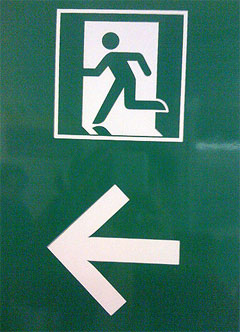In a previous career, as a commercial mortgage banker, potential clients were easy to identify. The tricky step wasn’t locating the organizations, it was getting the right person in that organization to say yes to a request for a meeting. These days I offer a product that anyone might want to buy; my “product” is structured creativity, training and facilitation. Any organization, anyone that works in a team, anyone looking for innovative ideas is a potential client. But actually calling on organizations and companies that haven’t expressed prior interest hasn’t been an effective sales tool. Even more than in most businesses, the best way to get work is to do work, and then follow up when any interest or inquiry is expressed.
If I had to point to our most effective marketing tool in the business of structured creativity and facilitation, I’d say it has been organizing a training on Creative Problem Solving, and inviting everyone I know, (essentially to manufacture some work). When I first moved to Paris we ran those training sessions in the living room of our apartment. Some of the folks who participated, over the course of the ensuing decade, lobbied their companies to do creativity training or use trained facilitators, and they became our clients.
 The second effective marketing tool has been attending and leading sessions at conferences. The people you get to know by working with them provide work opportunities as the years pass. And, years seem to be the necessary time frame to measure what’s effective.
The second effective marketing tool has been attending and leading sessions at conferences. The people you get to know by working with them provide work opportunities as the years pass. And, years seem to be the necessary time frame to measure what’s effective.
I didn’t do either of these things as a marketing technique. Training in our apartment? We did it to make a little money. Attending conferences is just good fun.
Recently, one of the networks I work with, Knowinnovation, was asked to make a proposal to facilitate a specific conference with sixty participants on the subject of social science and climate change. We weren’t selected for the job, but because of Knowinnovation’s penchant for academic innovation, we were instead invited to attend the conference as a participant. We accepted, and once in the room, I realized there were a number of representatives of research funding agencies from around the globe. Each of these agencies is a potential client for Knowinnovation. The old sales juices began to flow. I made a point of chatting with some and collecting business cards, and have since re-contacted each person.
But the experience made me think: Is there a more proactive method to market in this business other than simply working and then following up any interest?
No matter what your product, it’s useful to be an expert in a niche in a segment of your business. At Knowinnovation we specialize in academic innovation. Specifically we help researchers come up with novel, cross-disciplinary research projects. Within the domain of structured creativity and innovation, Knowinnovation’s niche is working with academics. Within that niche the universe of potential clients gets smaller, meaning we can identify prospective clients and target our efforts to discovering their needs and generating work opportunities.
Making the decision to do something different and attend an acadamic conference – one that originally I’d thought I might be paid to facilitate – turned out to be a really useful marketing activity. It also allowed me to see how advice I was giving others (to find a niche) applied to me. That what I knew about the business of structured creativity; that there isn’t a good proactive way to seek clients, might be less true than I thought. My capacity to break that assumption happened because I did something different.
Tags: assumptions-busting, differentiation, micro-marketing, niche